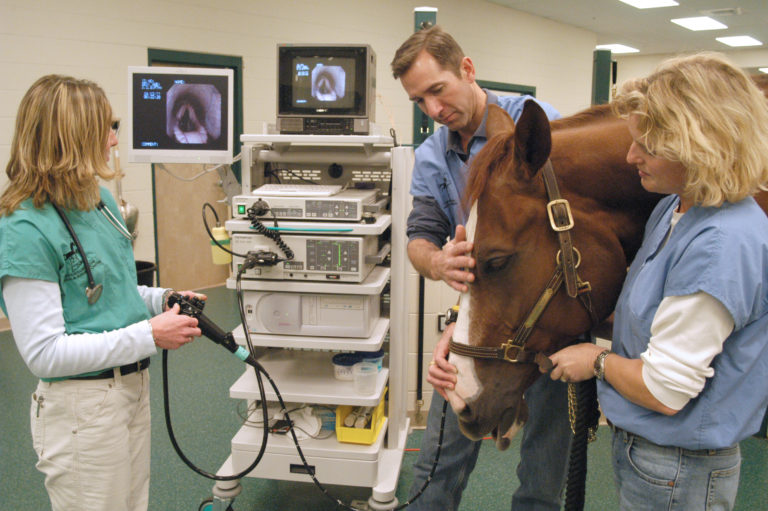Dressage sport has changed significantly in the past 40 years and is now dominated by horses who were bred specifically to be dressage athletes and who were trained to specialize in dressage early on in their careers.
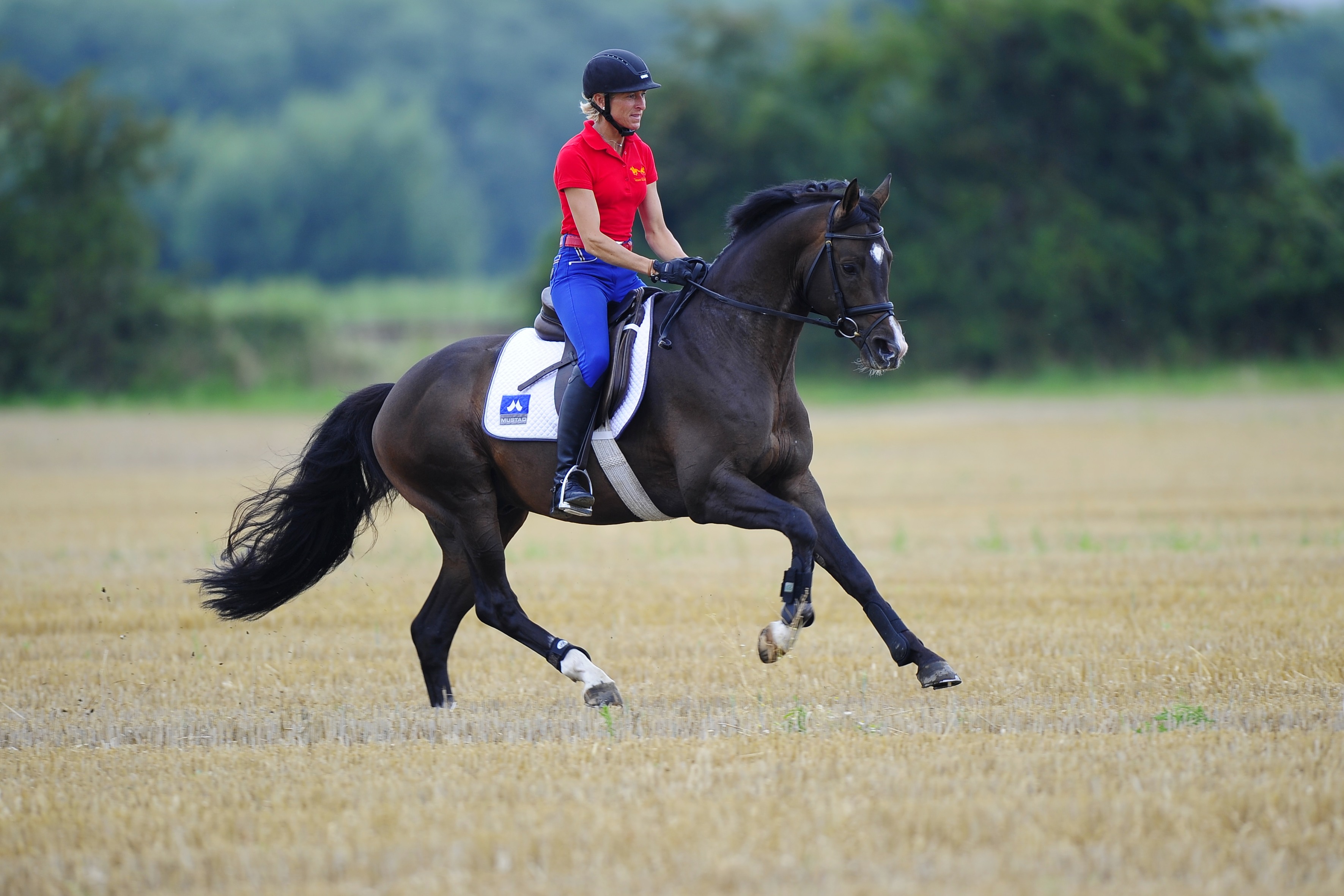
Ingrid Klimke, Germany’s double Olympic champion in eventing and international dressage star, spoke about this during one of her recent symposiums, saying that in view of the ever-increasing quality of such specialized horses, many trainers and owners lose sight of the initial goal of training, which is to improve the horse and not just teach him certain movements required in dressage tests.
Klimke is world famous not only for her enduring international success in both disciplines, but also for her attitude, which she herself titles “ride for your own pleasure,” and which is reflected in her riding style. “The most important thing is that a horse is not only learning a movement like piaffe properly, but that he executes it with pleasure over many years in the sport,” she says.
One important reason why all her horses—eventers and dressage horses alike—show so much joy and life during their appearances in the dressage arena, is undoubtedly her uniquely holistic training approach. Her dressage partners regularly get dirty hooves, jump small fences without hesitation and don’t get themselves in a muddle over cavalletti combinations. In this article, Klimke introduces her holistic training approach by explaining its elements and giving practical advice on how to improve performance and keep every dressage horse interested.
General Considerations
In 1980, my father wrote in his book, Basic Training of the Young Horse that many dressage horses are not even able to clear an obedience jump and are never allowed to move freely in nature under a rider. Back then, he already indicated the dangers of too-early specialization, like leg troubles.
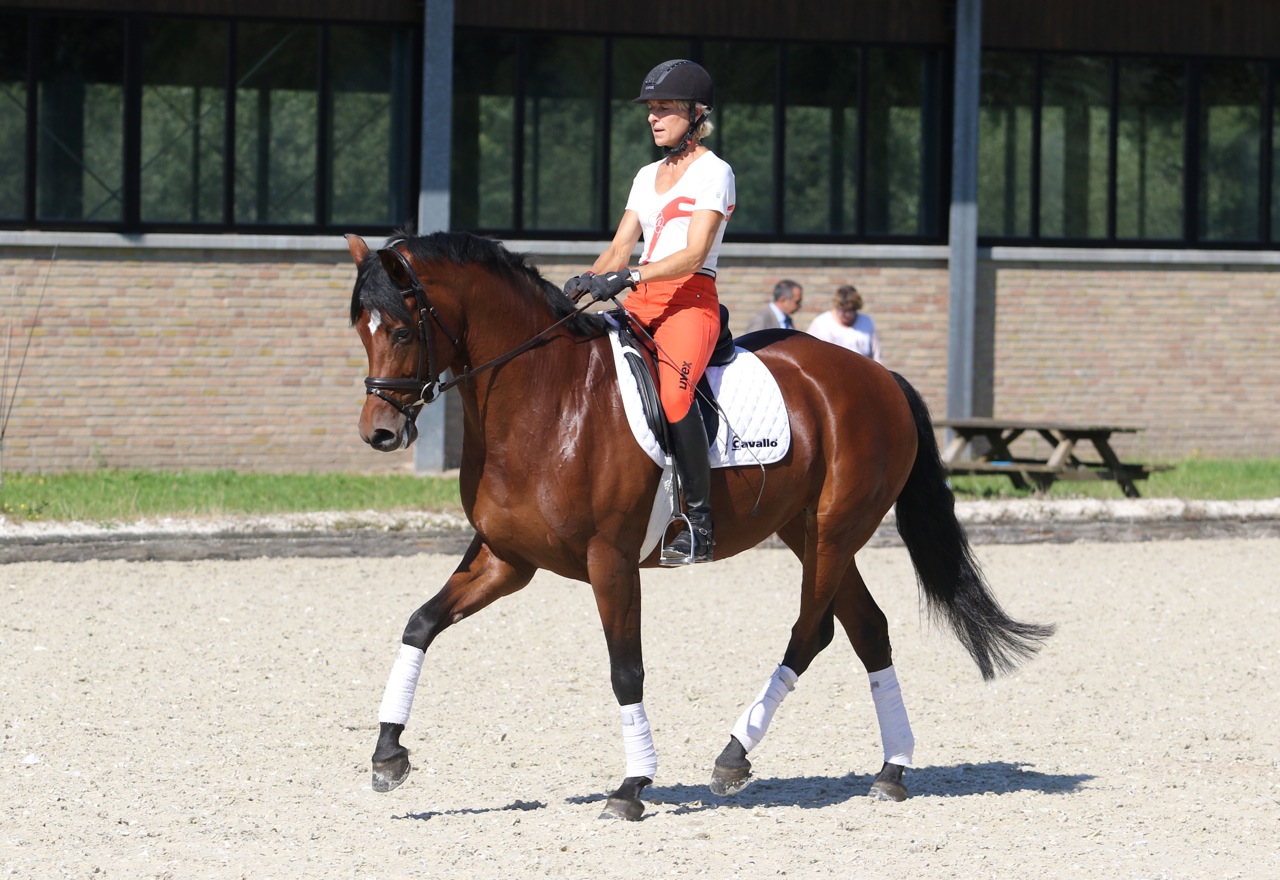
)
So my family’s approach for all of our horses, no matter which career we have chosen for them, is to do the same versatile basic training in the first years. The more systematically a horse gets strengthened in his musculature and the more carefully he gets suppled in his youth, the stronger he will be to start his specialization after this basic training and this sufficient capability means that the horse will remain healthy despite increasing requirements.
Often underestimated in the training of the horse is the challenge to keep a horse both physically and mentally sound and interested in his work over many years. Therefore, the rider has to set the goal of training a horse who is content, thinks for himself and works as independently as possible. This ability to think for oneself is a goal that is beyond any technical demand, but only then the horse will be in harmony with his rider. This requires a rider to educate himself to allow the horse some initiative because otherwise the rider must always be right, and no rider ever is right all the time.
I create an individual training plan for each of my horses, no matter if they are young and still doing their basic training or if they are experienced international eventing or dressage horses. These plans consist of several elements that make sure my horses follow a versatile training plan and that they enjoy themselves.
Following are seven elements of my dressage horses’ training that together take care to maintain or increase stamina, strength, physical fitness and motivation.
Element 1: The Off Day
At the beginning of the week my horses have a day off. This doesn’t mean that they are stable-bound, but they can relax in the field where they usually go anyway for a few hours every day. If the weather is so dreadful that we cannot turn them out extensively on their off day, the horses roam free under supervision in the indoor arena. I consider such off days, which really allow the horses to switch off mentally, very important, in particular after a weekend of competition or after having learned something new. It’s the day that the horses can entirely be horses.
Element 2: Dressage Training
Dressage training doesn’t mean that on that day I drill the movements the horse will need to show at a certain level. It is a trap into which some riders fall, forgetting that these required movements are only a means to reach certain goals, but should not be goals in themselves. Instead, dressage training means to systematically make the horse more supple, to develop his gaits, strengthen his musculature and to increase his throughness and expression.
Each training session has to follow a structure that is clear and keeps the horse interested. We divide it into three parts: the warm-up, working phase and cool down.
The warm-up is of particular importance, as in this phase the horse must reach a state of relaxation, which is an indispensable prerequisite for him to use his whole body and listen to the rider. I always start in free walk with the reins at the buckle like my mentor, the late Paul Stecken (German dressage master), used to say. This is meant to help the horse find relaxation, which is visible by the horse’s dropped, stretched neck and a loosely swinging tail.
Next, one can use walk cavalletti of about 20 cm height to encourage the horse to stretch down. An experienced horse will need approximately 10 minutes to warm up while a younger one might need up to 20 minutes or occasionally even more. But it is of paramount importance not to switch prematurely to the working phase without successfully having achieved the required relaxation of the horse.
During the working phase, which differs depending on a horse’s training level, the rider constantly has to safe-guard not only the relaxation, but also the rhythm, the soft contact and the horse’s activity.
Of course, these training sessions also serve to exercise or teach the horse the dressage movements. But as riders, we absolutely have to look at the movements as a kind of treasure that we have to take care of. The horse has to carefully learn the movements in a way that is playful and as stress-free as possible so that he is really eager to execute them. So to teach my horses the demanding piaffe and passage, we also use the training on the double-longe (long lines) once per week to complement the piaffe and passage training sessions and give them some additional variety without having the weight of the rider on their backs.
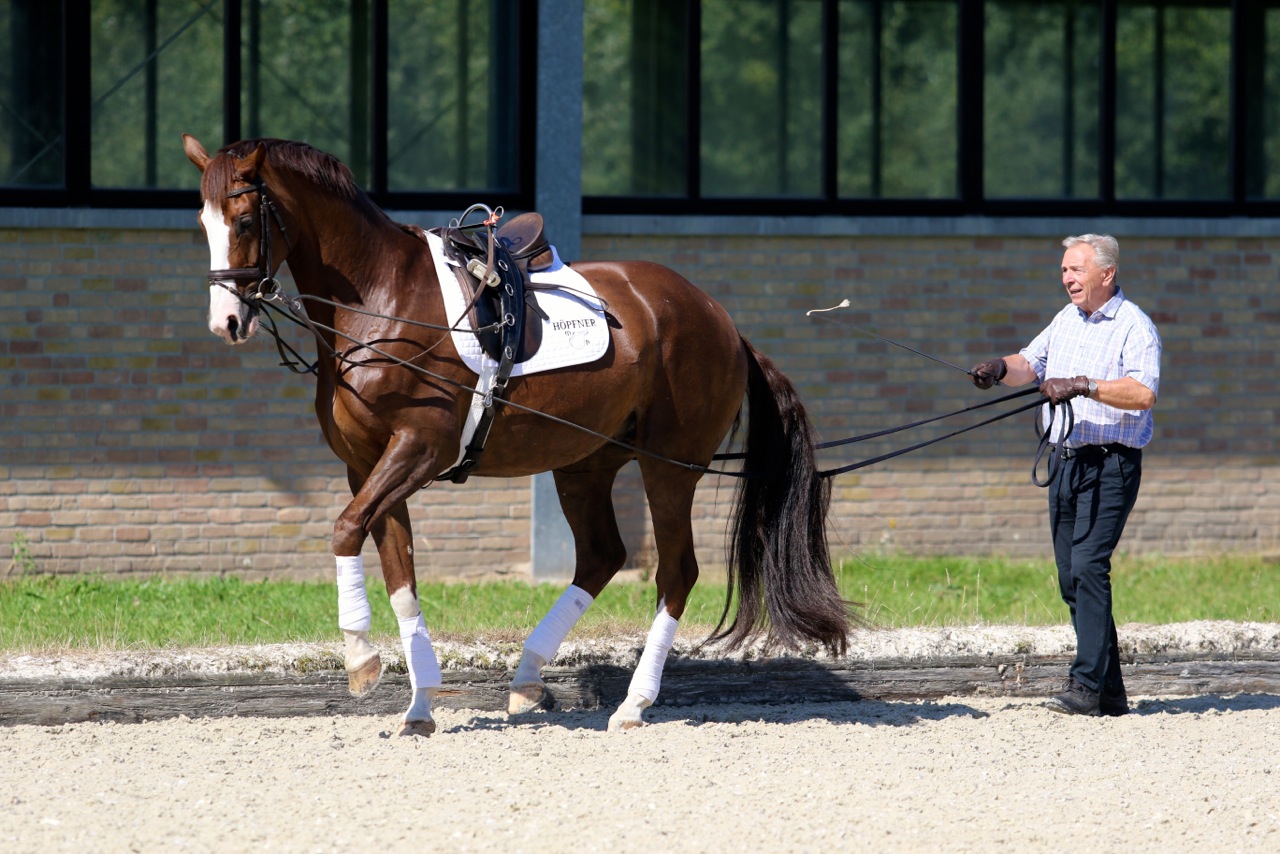
Once the horse properly learns the movements, the rider’s job is, above all else, to make sure that the horse keeps this eagerness to show them throughout his career, which might span 10 years or even more.
The cool-down phase cannot be neglected as it makes sure that the horse returns to the stable in a relaxed and content frame of mind. I always finish a working session the same way I start it: In free walk on a long rein.
Element 3: Cavalletti Work
About twice a week I include cavalletti work in my training session. It is an important as well as valuable part of my approach as it is an excellent way to strengthen and loosen muscles and supple the joints.
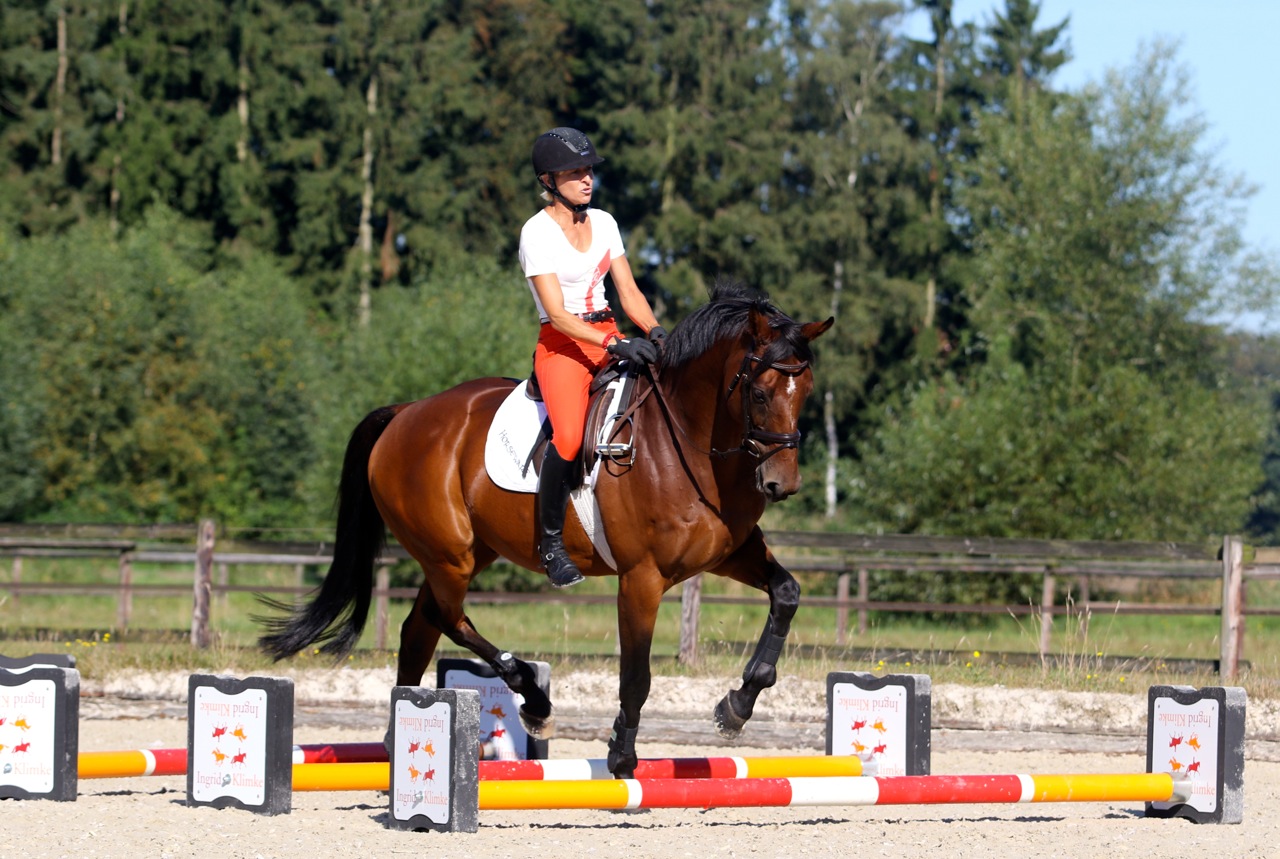
)
Some trainers shy away from it because they fear damage to their horse, but by using proper heights and suitable distances for each individual horse, this will not be the case as my experience and that of my father has shown.
Proper ways to use cavalletti:
• On the longe to eliminate one-handed stiffness by stretching the horse’s outside neck and core muscles.
• In walk to increase the lengthening of the strides by a progressive enlargement of the distances between the cavalletti and to give the horse an idea of collected walk by making the distances smaller and to animate the horse by elevating the steps.
• In trot to increase the horse’s cadence and expression by activating the hind legs and loosening the back.
• In canter to improve the stride and balance by having the horse take more weight behind.
To stay safe in cavalletti work:
• Make sure the distances are measured correctly for your horse. The recommended distances for cavalletti set on a straight line are as follows: walk—20 cm high, 90 cm apart; trot—30 cm high, 1.30–1.50 meters apart; canter—50 cm high by 3 meters apart. These distances vary, and a rider will need to adjust accordingly.
• To avoid tiring your horse, do not prolong the work over cavalletti.
• Allow your horse to slowly get accustomed to this kind of work.
Element 4: Longeing
One day per week my horses are longed over cavalletti in what I call a “wellness frame.” The horse should relax and seek the bit by stretching forward and downward. For that purpose, I use three circles that overlap each other (see illustration below). On the two circles to the outside I radially position four cavalletti on the outside: One circle is for walk (distances approximately 90 cm and one circle is for trot (distances approximately 1.30 meters).
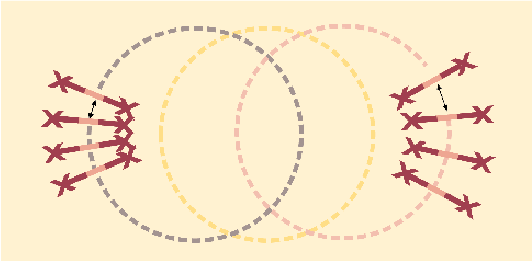
On the circle in the middle I warm the horses up for about 10 minutes in walk and another five to 10 minutes in trot. After that I attach running side-reins and take care to fit them shorter on the inside rein so that the outside one is able to limit the inside bend and prevent the horse from falling out over the outside shoulder. Take great care to adjust the side-reins in a way that the horse can stretch. Do not hesitate to re-adjust them even several times to find the length your horse is comfortable with. Make sure that there is a constant change between the three circles and on both sides, as this is what supples the horse.

Element 5: Gymnastic Jumping
Some might have seen my Small Tour winner Franziskus clear a small jump during the show in Frankfurt last year after he placed second in the final for the best Small Tour horses in Germany. His joy when he flew over it showed how much dressage horses also enjoy clearing small jumps in their training.
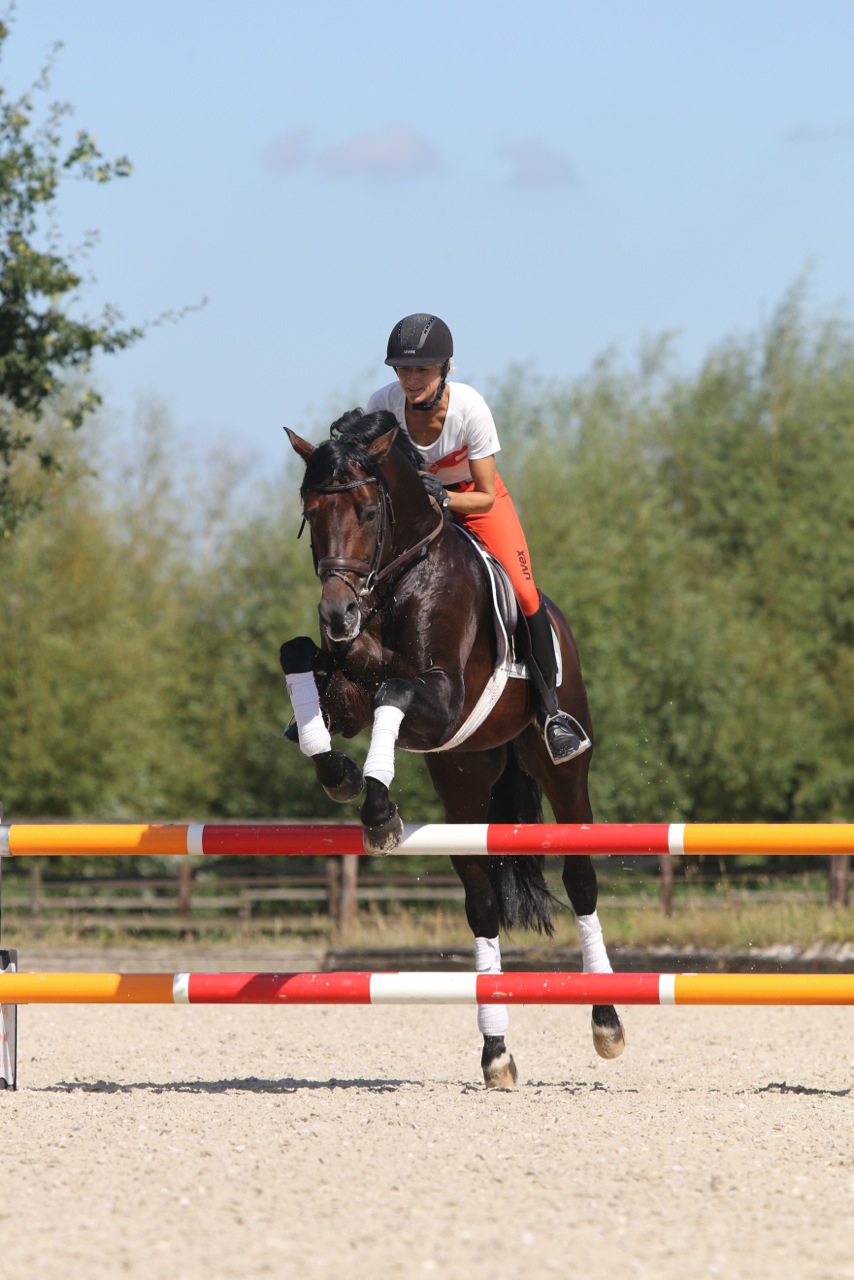
(Silke Rottermann)
I practice small gymnastic jumping lines on a weekly basis with all my dressage horses to keep variety in training, to loosen and strengthen back muscles and to develop the muscles of the hindquarters. I often include one-stride in-and-outs, where the horse has to immediately take off again after landing. Do not be afraid if you have never practiced jumping with your dressage horse. Doubled cavalletti can serve as a small jump and can easily be ridden in a dressage saddle. Once you add small jumps into your training, you will soon recognize the positive mental effects this variety can have on your horse.
Element 6: Cross-Training
At least one day a week, my dressage horses go hacking, which we always do in groups for safety reasons. Sometimes we just hack for fun and we might even go swimming with some of them. But while fun hacks are regularly on the list, I also use them for cross-training.
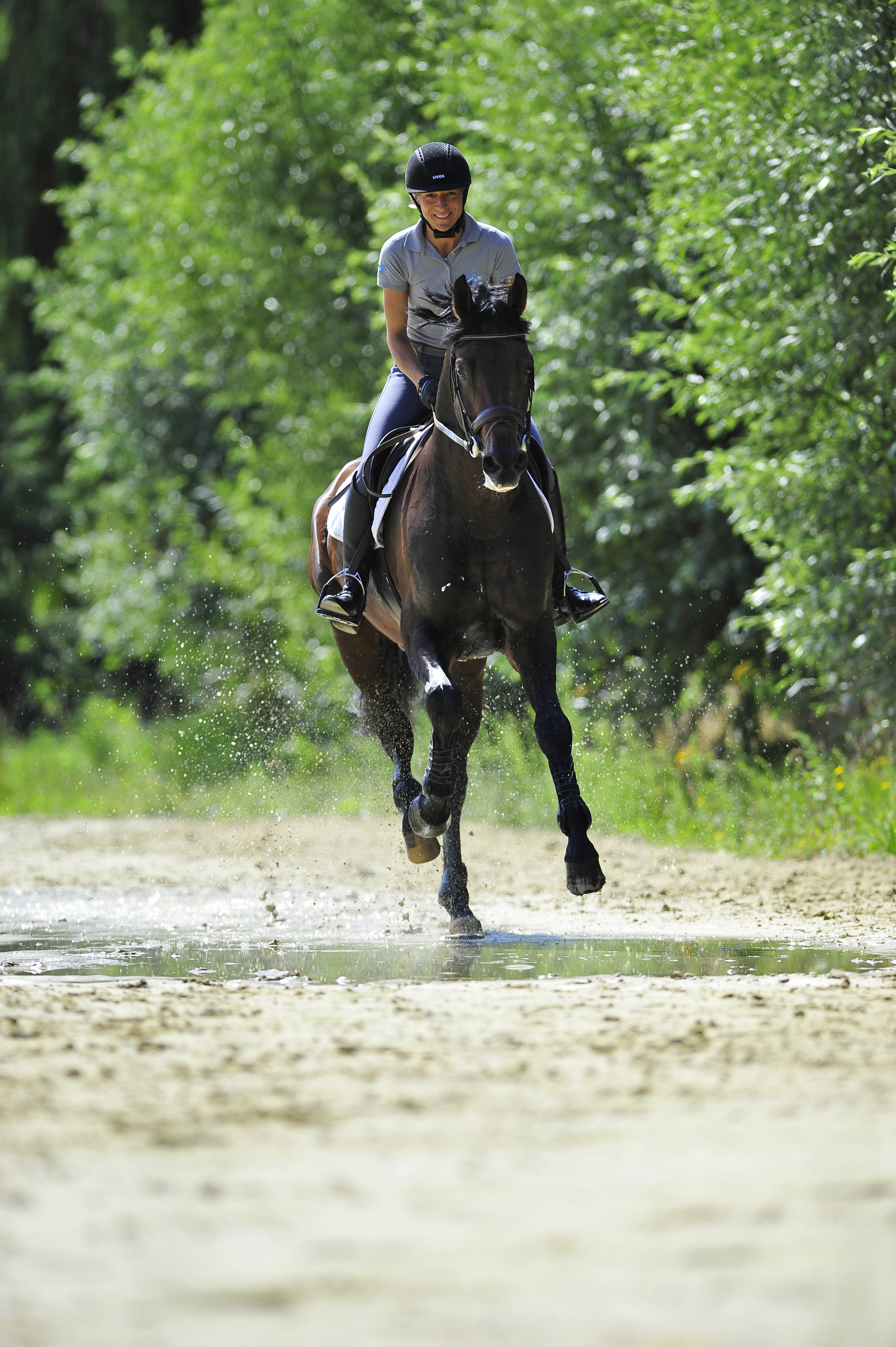
)
A horse’s stamina and fitness improve by using a modified kind of interval training, which I apply to the training of my eventers. I alternate trot and quiet canter sequences with walk phases to let them recover. While I think it is beneficial to walk the horses over different types of surfaces outside the arena to increase their surefootedness, I canter only on an even, not-too-hard and not-too-deep surface to avoid risk of jarring the legs. We also include climbing hills to strengthen the hindquarters.
Usually I do not use cross-training to practice dressage movements on purpose, but it can happen that a horse will offer some of them. For instance, my Small Tour winner Geraldine recently started to passage on a hack, a movement she is learning at the moment. But when such a movement is offered, then we can happily accept it by praising the horse a lot and supporting the movement with the according aids.
Element 7: Test Riding
On Sundays, I usually practice test riding. This does not mean that I always ride a whole dressage test, but parts of the one the horse will have to do at the next show or season. On the one hand, this is important to get the horse acquainted with the required sequences of movements because doing them as isolated movements and one after the other at the required letter in the arena are two very different things and a certain routine helps when it counts the most: at a show. On the other hand, one must be careful not to bore the horse or get him so used to the sequences that he anticipates the movements in competition later. This is something that everybody also has to make dependent from his horse.
When Success Materializes
With a variety in training that is not random, but systematic and takes the horse’s individuality into account, we have the great opportunity to gently build up physical fitness and muscles and, at the same time, keep the horse interested in his daily work over many years to come. My father always used to say, “Ride for your own pleasure.” But this will only be the case if we also train the horse for his pleasure and not as a means to fulfill our personal goals. Then success will not fail to materialize.

Ingrid Klimke is a five-time Olympian who won Olympic team gold in three-day eventing in 2008 and 2012 and team silver in Rio in 2016. Like her legendary father, the late Dr. Reiner Klimke, Ingrid is also a successful international Grand Prix dressage competitor. Ingrid, who earned the title “riding master” from the German Equestrian Federation in 2012, runs a competition stable in her hometown of Münster.
This article first appeared in the June 2017 issue of Dressage Today magazine.









